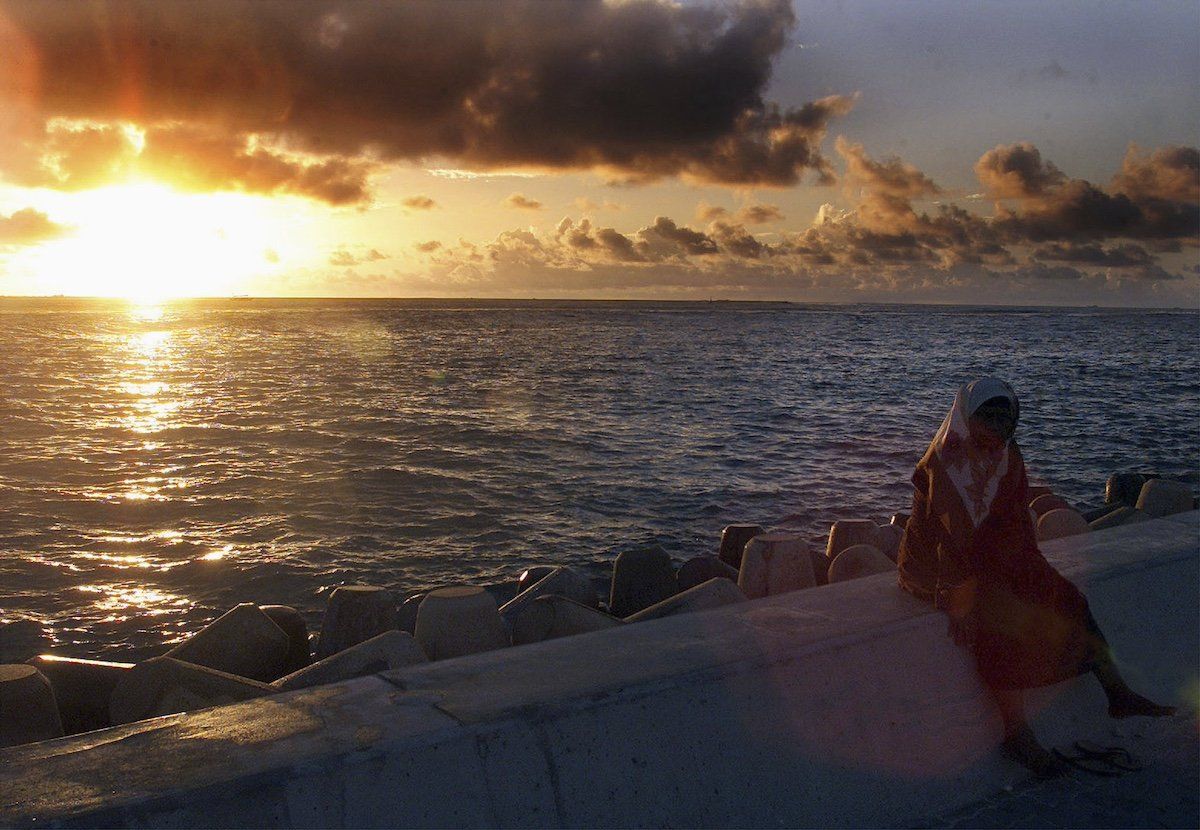Every year, destructive climate change disrupts the lives of millions, tearing them from their homes and families – and sometimes even their countries. UN chief António Guterres warned earlier this year that rising sea levels would catalyze “a mass exodus of entire populations on a biblical scale.”
Rising tides in the Pacific Islands are threatening to swallow homes in places like Tuvalu and Kiribati, while drought-plagued farms in the Horn of Africa are forcing many to flee their ancestral villages. Yet, under the current framework of US and international law, citing climate change alone as a reason for seeking asylum is insufficient. Should that change?
Displaced by climate change. Since 2008, disasters such as floods, storms, earthquakes, wildfires, and droughts (not all climate-related) have internally displaced more than 376 million people worldwide, including 32.6 million in 2022 alone, according to the Internal Displacement Monitoring Centre.
While most of the displaced remain in their native countries, the White House in a 2021 report said that the “accelerating trend of global displacement related to climate impacts is increasing cross-border movements, too, particularly where climate change interacts with conflict and violence.”
This is happening across the globe. Devastating hurricanes have pushed waves of people out of Central America’s Northern Triangle and toward the US, while severe drought in Somalia has led to a massive influx of people in neighboring Kenya.
At COP28, the UN High Commissioner for Refugees Filippo Grandi called for urgent action to help displaced populations. “The climate emergency is punishing displaced people three times; It tears them from their homes, it compounds their crisis in exile, and destroys their homeland, preventing them from returning,” he said.
Restraints of international law. Legally, there’s no such thing as a “climate refugee,” despite how common the phrase has become in recent years. The 1951 Refugee Convention, which provides protections to people who’ve fled various forms of persecution, does not explicitly account for people displaced by climate change. But there’s an evolving discussion on the issue within the international community.
The UN Human Rights Committee in 2020, for example, ruled that it’s unlawful to force people to return to countries where their lives might be threatened due to the climate crisis. The UN Refugee Agency also says the 1951 Convention “can apply when an individual’s risk of facing persecution or violence is increased by climate change,” such as the thousands who fled Cameroon in 2021 after dwindling water resources led to deadly violence between herders and fishermen.
Still, some advocates believe that there should be broader protections under international law.
“The effects of climate change show the need for an expanded concept of international protection,” Bill Frelick, the director of the refugee and migrant rights division of Human Rights Watch, wrote in 2020. “Is the danger of drowning or starving as a result of climate change no less of a threat in need of protection than being persecuted for one’s identity or beliefs?”
But other experts also underscore how difficult it is to base asylum claims solely on climate change. “A lot of times, people are coming for reasons that have to do with politics and conflict,” says Jeffrey Chase, a former immigration judge in the US.
“If you drill down deeper, the root cause of some of these issues actually results from climate change – fighting over land, or limited resources, or groups being punished by not getting aid after a natural disaster, or that sort of thing. And it won't be flagged, necessarily, as a climate change issue. This is a pretty new and developing thought process,” Chase adds.
Can the displaced claim asylum in the US? Some legal advocacy groups in the US have made the case that migrants who’ve fled their countries due to extreme weather have grounds to claim asylum. But asylum-seekers must prove they suffer persecution or fear persecution based on one or more of five categories – race, religion, nationality, membership in a particular social group, or political opinion.
Deborah Anker, a Harvard law professor and leading expert on US asylum law, says there doesn’t need to be an expansion of asylum law regarding climate change but rather “an interpretation of the refugee definitions to respond to current events.”
Along these lines, Anker says people should not use the phrase “climate refugee,” because it gives “people the impression that we're creating this whole other thing outside of the traditional asylum question.”
What’s needed is a new way of thinking about “how climate change factors can fit into the standard asylum criteria,” says Chase.
As a hypothetical, Chase laid out a scenario in which climate change forced a farmer in a rural area to move to a city, where they face extortion from gangs (often acting as a de facto government) and decide to flee to the US. “They can’t go back to their village because of climate change. There’s no way to earn a living there anymore. That wouldn’t come up on anybody’s radar as a climate change-based asylum claim, but it’s all intertwined,” he says.
But, as ever, immigration and climate change are divisive topics in Washington, so there are obstacles to the US government taking major steps to address this issue.
“Although more Republicans have acknowledged climate change as a reality in recent years, it remains a highly partisan issue,” says Eurasia Group analyst Kylie Milliken, adding that virtually all GOP lawmakers “want to limit asylum overall and have grown more insistent as US southern border encounters have skyrocketed in the aftermath of the pandemic.”
President Joe Biden “could try to create a program for climate migrants via rulemaking, but he has faced considerable pressure from both sides of the aisle to limit migration,” says Milliken, adding that it’s “extremely unlikely” that Congress would take legislative steps to overhaul the immigration system to grant adequate protections to climate migrants.
All of this means that people displaced by climate change – whether at the US-Mexico border or around the world – are often overlooked. Unless more is done to expand awareness on the ways in which climate change and migration are intrinsically linked, countless people are poised to remain in a state of legal limbo and suffer in the process.



















